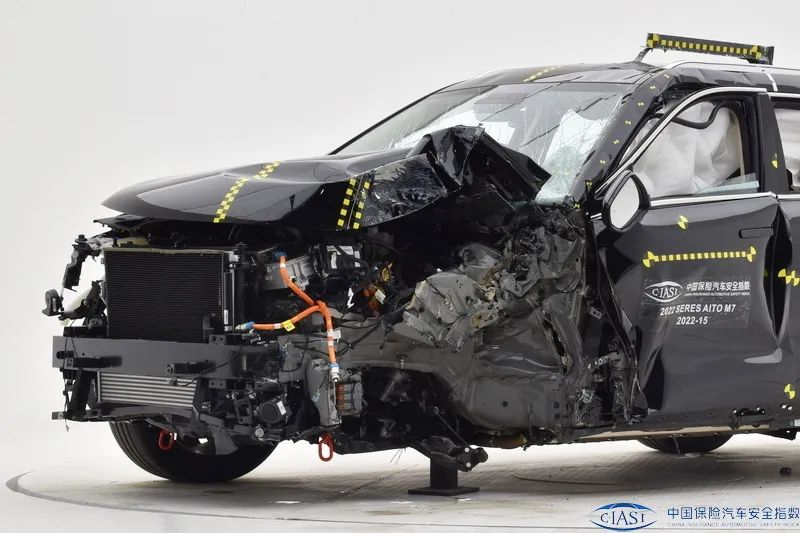Writing: Liang Zhihao
Is the crash test not necessarily the be-all and end-all?
Last week, China Insurance Research Institute released the latest batch of test results, and we naturally reported on the performance of each of the tested models as soon as possible.

However, this time all brands performed surprisingly well, resulting in a peaceful scene and causing a lack of topic in this round of testing, which made everyone relatively indifferent to this China Insurance Research Institute’s test. However, the performance of several popular models still attracted the attention of netizens, including the Huawei-backed AITO M7.
You may find it strange that AITO M7’s score does not seem to be a problem?
Indeed, based solely on the ratings, AITO M7’s performance can even be considered excellent, whether it is the most difficult driver’s side 25% offset collision, side collision or roof strength, all received a G (excellent) evaluation. Similarly, with the help of Huawei’s assisted driving technology, AITO M7 even received a high rating in active safety equipment testing.

So what caused netizens to suddenly question the safety of AITO M7?
The answer lies in its performance during the 25% offset collision. Unlike other large SUVs tested, such as the Lynk & Co 09, Ideal L9, and BMW X5, although AITO M7’s final score is not low, the A-pillar showed a relatively obvious bending phenomenon during the collision.

 We can clearly see from the collision scene that the front of the WEY M7 did not completely dissipate the impact force during the collision, resulting in the A-pillar root and the firewall solidly colliding with the obstacle, and the force squeezing backwards eventually caused plastic bending at the joint between the A-pillar and the roof.
We can clearly see from the collision scene that the front of the WEY M7 did not completely dissipate the impact force during the collision, resulting in the A-pillar root and the firewall solidly colliding with the obstacle, and the force squeezing backwards eventually caused plastic bending at the joint between the A-pillar and the roof.
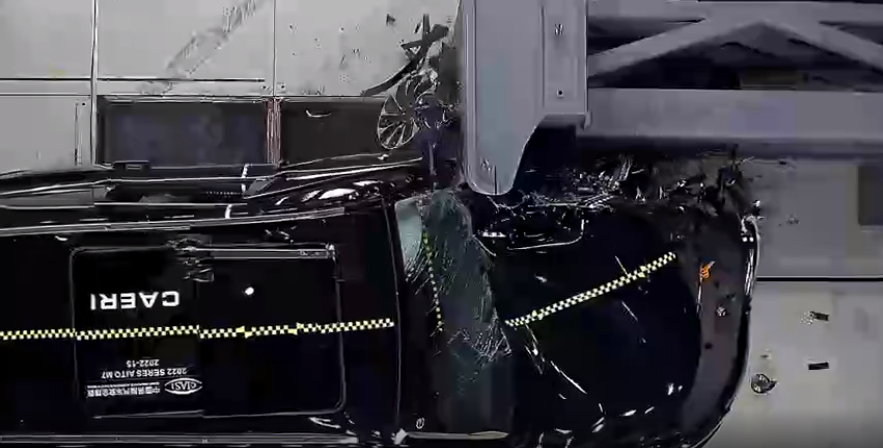
From the top view, we can also see clearly that the front of the WEY M7 did not “slide out” like Volvo, Lynk & Co, or the Li Xiang One by setting up guiding devices to avoid collision between the A-pillar and obstacles, nor did it absorb the collision energy by pressing the front like Japanese brands.
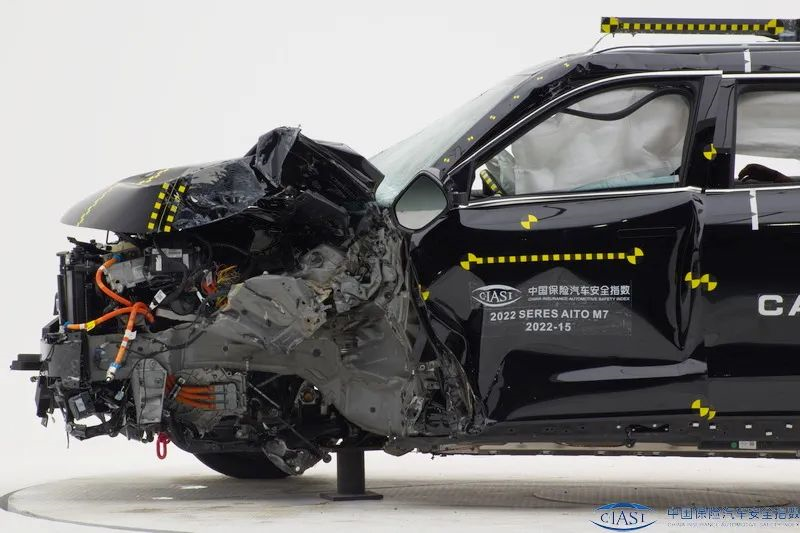
However, to be honest, although the bending of the A-pillar is not visually pleasing, considering its platform, in my opinion, the performance of the WEY M7 is already somewhat beyond my expectation.
Although its body and overall structure are similar to the old Dongfeng Fengguang ix7, it is obvious that Huawei and Ceres have optimized the body strength. Otherwise, with the addition of the extended range system, when the vehicle weight rose sharply to 2.34 tons, the performance of the WEY M7 would be even more devastating.
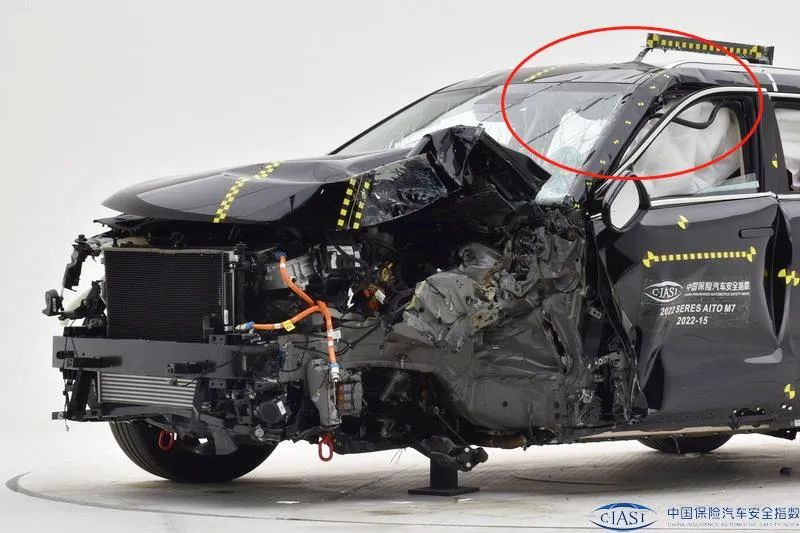
Fortunately, due to the very reliable protection of the airbag, the bending of the A-pillar did not affect the “life safety” of the dummy inside the car, which is why the WEY M7 is still able to obtain a high score in the offset collision test, even under structural deformation.
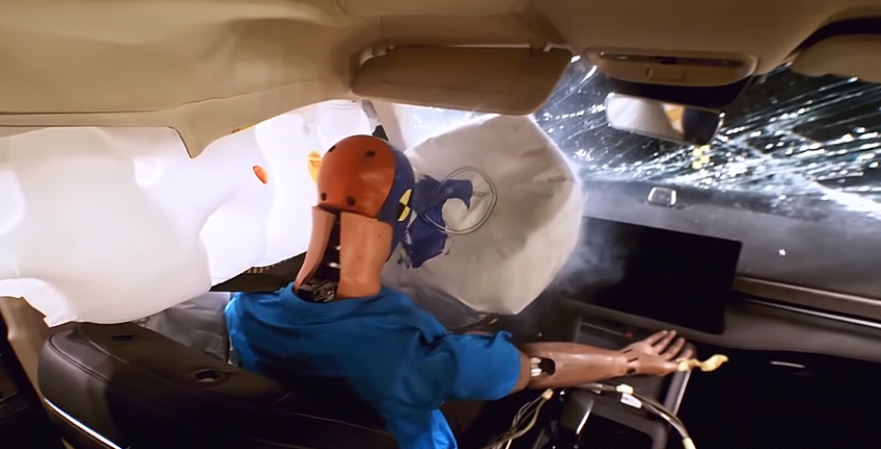 The same situation also occurs in the side collision.
The same situation also occurs in the side collision.
As the vehicle was not optimized for such strict collision tests during the design phase, the side collision of the WEY M7 also looks equally disastrous. First of all, the threshold area did not effectively share the collision damage, resulting in the majority of the impact force being borne by the thin doors and lonely B pillars.
This also resulted in the serious displacement of the B pillars of the WEY M7. According to the published data, after the side collision, the distance between the B-pillar and the driver’s centerline of the WEY M7 was only 14.5cm. For comparison, the Toyota Crown Jun Jie (a version of the Highlander) in the same price range has a value of 24.5cm, while the BYD Tang has a value of 21.5cm.
The C-NCAP also gave the evaluation of “structural component failure” for this.
Therefore, in terms of protecting the driver’s torso, the WEY M7 also received the only A (better) evaluation. However, under the effective protection of airbags and air curtains, the scores of other sub-items in the side collision were also not low.
It is obvious that Huawei has indeed tried its best to bring the safety of the WEY M7 closer to that of luxury SUVs in the same price range through material and configuration optimizations. However, due to the limitations of the structure, this optimization is still exposed in the test.
Once again, this makes people reflect on collision tests.All the things that happened on the Wanjie M7, does it remind you of the “Haoying Incident” that pushed Zhongbao Research and Development to the forefront two years ago?
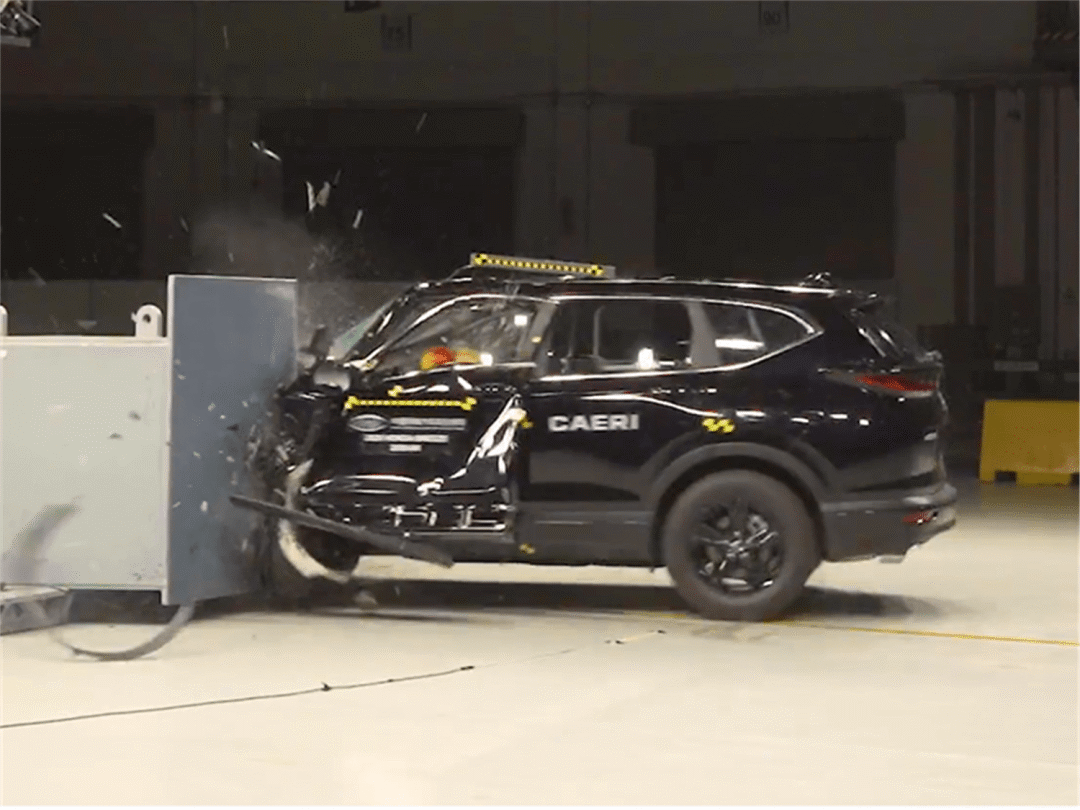
Similar to the Wanjie M7 incident, Honda’s Haoying participated in the Zhongbao R&D test and also had an A-pillar bending during the 25% offset collision, and Haoying’s bending situation was even more devastating. However, in the final evaluation, Haoying still received an “Excellent” rating.

This suddenly caused a stir among netizens, and everyone suspected whether the highly anticipated Zhongbao R&D had also become a “five-star wholesale department” like C-NCAP, and then Zhongbao R&D urgently removed the test results of Haoying, which deepened everyone’s suspicion once again.
The two tests of Haoying and Wanjie M7 actually reflect the limitations of collision testing to some extent.

In order to know whether the protection of the occupants in the car is in place during a collision, a series of test dummies are used in collision testing. These dummies may look inconspicuous but are expensive – the cost for a full-size adult collision dummy ranges from 1 to 2 million yuan, and the more sensors and realistic they are, the more expensive they become.
However, dummies are ultimately just testing tools, and the final judgment of a vehicle’s safety still depends on the degree of various sensors. In other words, no matter how badly the car crashes, as long as the dummy readings are normal, it is a “safe car”.
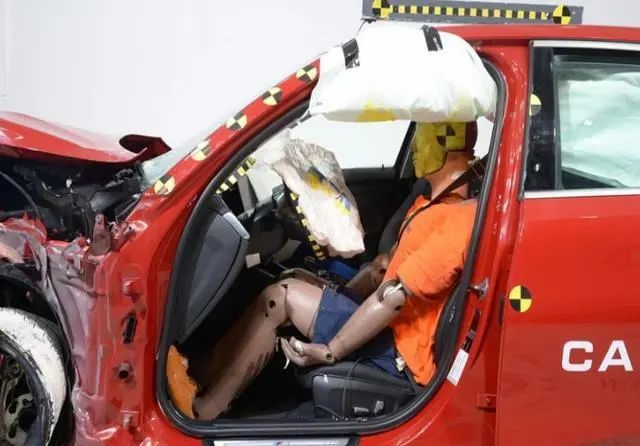 The fact is, perhaps the test results given by the crash test dummy of the Honda Inspire were actually correct, and Straightforward Zhong, faced with such a disastrous collision result, did not reflect on it too much, nor did he consider retesting it. Instead, he directly made the results public, naturally causing the onlookers to feel unable to understand or even angry.
The fact is, perhaps the test results given by the crash test dummy of the Honda Inspire were actually correct, and Straightforward Zhong, faced with such a disastrous collision result, did not reflect on it too much, nor did he consider retesting it. Instead, he directly made the results public, naturally causing the onlookers to feel unable to understand or even angry.
This extends to the next question: Does a car that is safe in a test necessarily mean it is safe on the road?
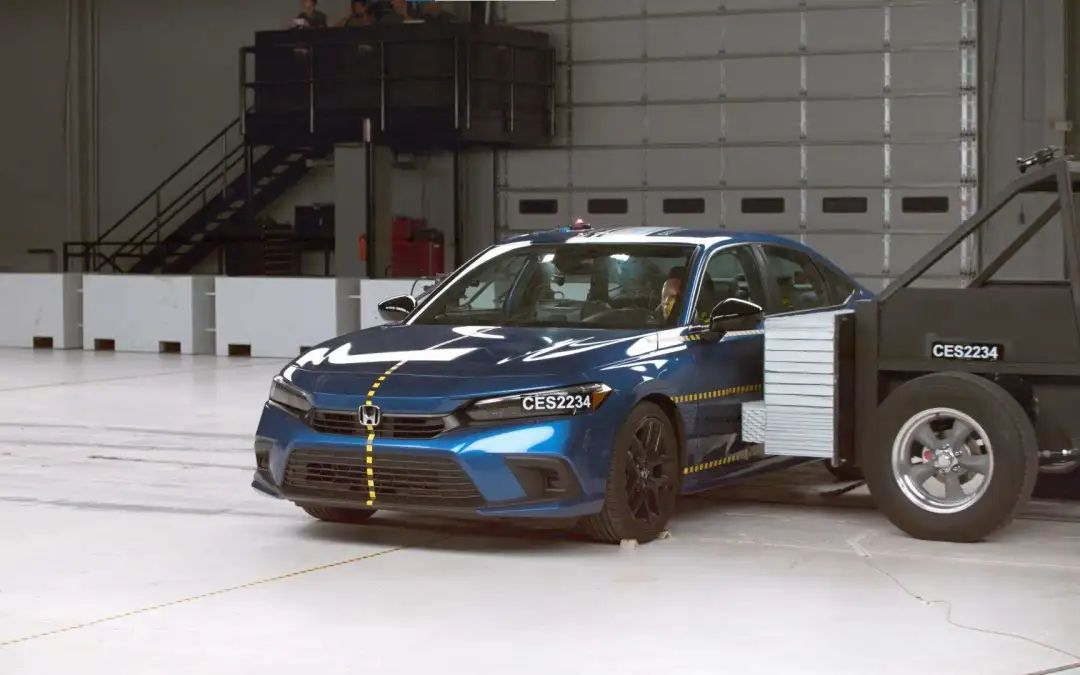
When a vehicle is on the road, it may encounter smaller cars or mud trucks; it may suddenly crash into a barrier or even hit the wall of a street. Accidents are unpredictable, and no one can guarantee avoiding them.
Even the strictest collision test cannot cover all accident scenarios. Additionally, collision test standards are transparent and open, so as long as car manufacturers are willing, they can easily optimize their vehicles without significantly altering the vehicle frame to change the rating from fail to a pass.

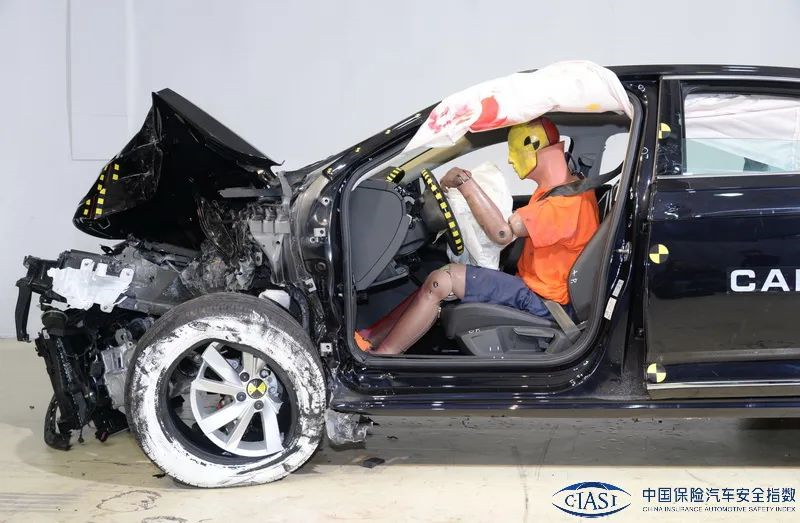
The most obvious example is the Volkswagen Passat, which became famous thanks to the Straightforward Zhong incident. After a mid-term design change, the Passat suddenly went from being a poor student to an outstanding student. Even the A-pillar became robust. Thus, for any strong car manufacturer, passing a crash test is not a difficult task.
However, does this experimental evaluation really cause a tremendous change in a vehicle’s safety during actual road travel? Does it truly lead to a driver hitting a steel wall at a 25% bias? I am extremely skeptical of this.
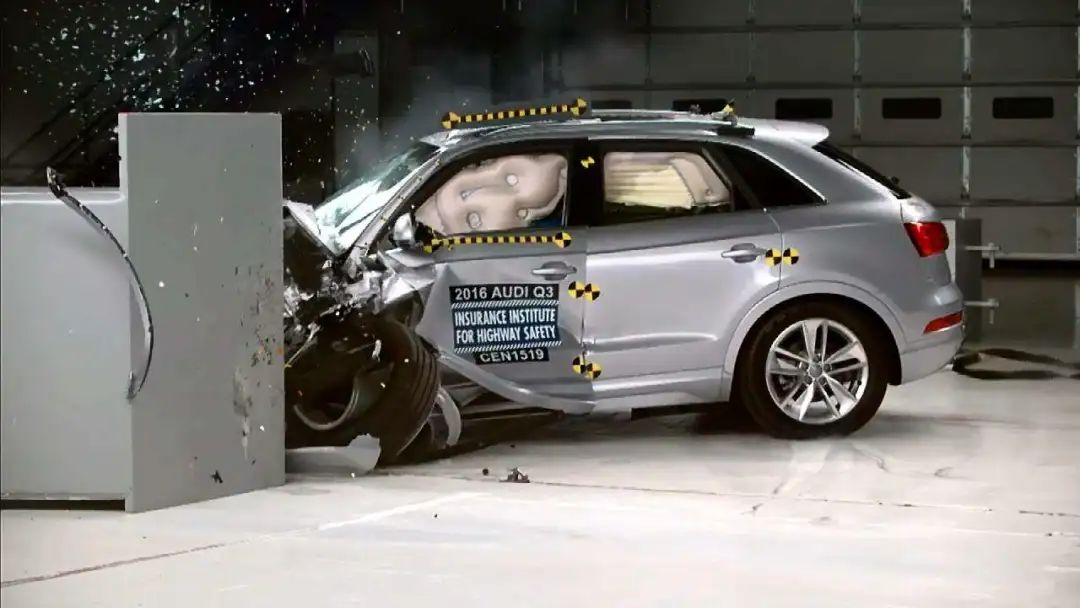 Instead of regarding collision test scores as the absolute truth, it’s better to keep a relaxed attitude and take it as one of the reference indicators when purchasing a car. According to data from the China Passenger Car Association, the Wanjie M7 sold 5226 new cars in October, and its cumulative sales since the launch in August have reached 13740 cars. As for its positioning in newly-built cars, it has achieved relatively good results. However, it remains to be seen how this “pillar collapse” incident will affect its reputation.
Instead of regarding collision test scores as the absolute truth, it’s better to keep a relaxed attitude and take it as one of the reference indicators when purchasing a car. According to data from the China Passenger Car Association, the Wanjie M7 sold 5226 new cars in October, and its cumulative sales since the launch in August have reached 13740 cars. As for its positioning in newly-built cars, it has achieved relatively good results. However, it remains to be seen how this “pillar collapse” incident will affect its reputation.
Regarding the title’s question, if a car’s A-pillar collapses but still performs well in tests, should we consider it safe or unsafe? I believe that this “life or death question” should be left to everyone to discuss in the comments section.
This article is a translation by ChatGPT of a Chinese report from 42HOW. If you have any questions about it, please email bd@42how.com.
